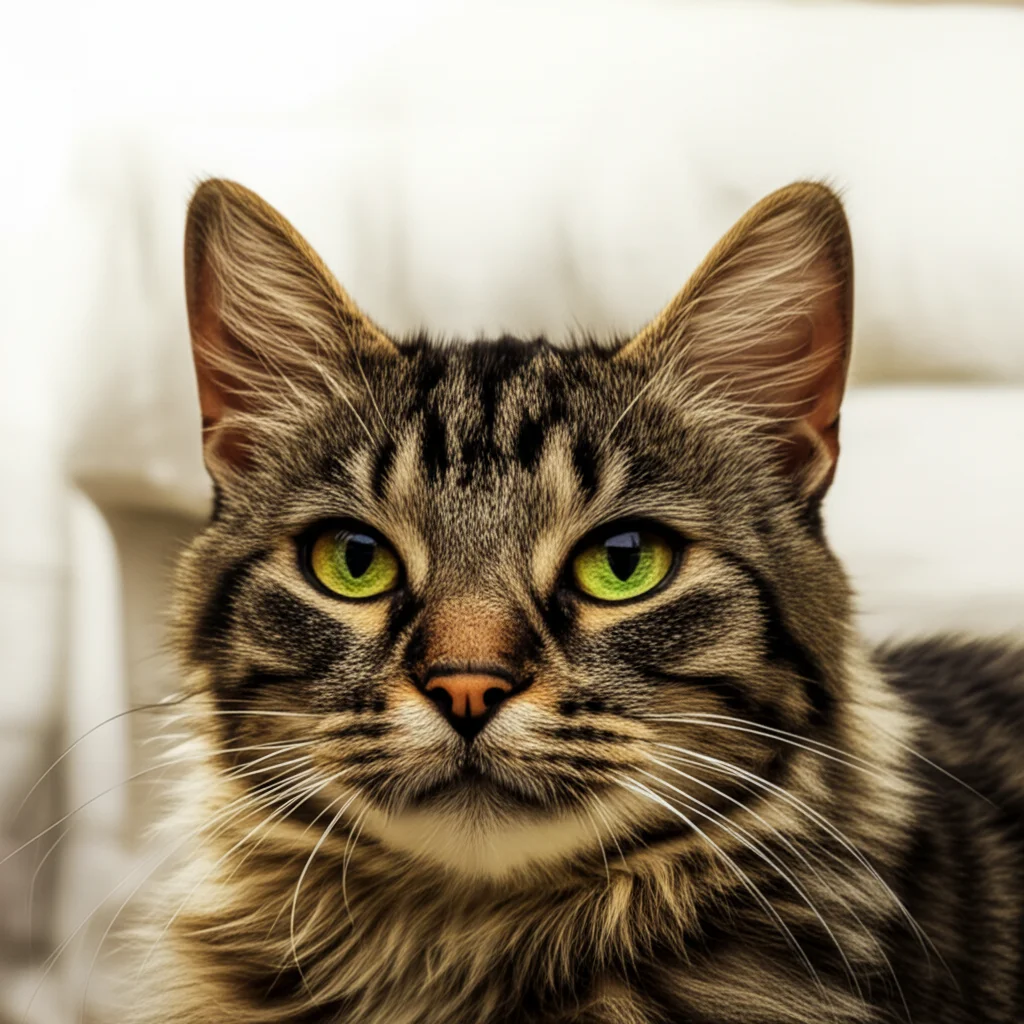· Todd Martin · Pet Care · 16 min read
How To Keep Cats Off Chair Cushions

Protect Your Furniture: How To Keep Cats Off Chair Cushions
It is frustrating to find your cat lounging on your favorite chair cushions. Maybe they are scratching, shedding fur, or leaving paw prints. You love your feline friend, but you also want to keep your furniture looking nice. Learning how to keep cats off chair cushions is possible with the right approach. This guide will provide practical steps and gentle methods to protect your furniture. We will cover understanding cat behavior, using physical barriers, employing scent deterrents, and offering attractive alternatives.
Takeaway
- Understand why your cat uses chair cushions.
- Use physical barriers to block access.
- Apply safe, natural scent repellents.
- Provide attractive, approved scratching and resting spots.
- Use positive reinforcement for good behavior.
Clear, Concise Answer
To keep cats off chair cushions, understand their motivation. Then use physical barriers like covers or double-sided tape. Apply cat-safe scent deterrents. Offer appealing alternatives such as scratching posts or a comfortable cat bed nearby. Consistent training and positive reinforcement are key for lasting success.
Understanding Why Cats Use Chair Cushions
Cats have various reasons for choosing your chair cushions. Often, they seek comfort and a high vantage point. A soft cushion feels good for a nap. A high chair back lets them survey their surroundings. This behavior is natural for cats.
Your cushions might also serve as a prime scratching spot. Cats scratch to sharpen claws, stretch muscles, and mark territory. The texture of upholstery can be very appealing to them. If your cat scratches, they might be saying, “This spot is mine.” You can prevent damage to your upholstery. Addressing their natural instincts is the first step in protecting your furniture.
Cats also enjoy warmth. A sunny spot on a cushion can be very inviting. They may also simply want to be close to you. Your scent on the cushions makes them feel safe and connected. Understanding these motivations helps you find solutions that work with your cat’s nature. This approach is more effective than just trying to punish them.
Sometimes, a cat uses cushions due to boredom or stress. A lack of stimulating toys or interaction can lead to unwanted behaviors. If your cat feels anxious, they might seek comfort in familiar places. Your chair cushions become a security blanket for them. Addressing these underlying issues helps keep them off your furniture.
Creating Physical Barriers and Deterrents
Physical barriers effectively block access to your chair cushions. These methods make the cushions less appealing for sitting or scratching. You can use simple items you might already have around your home. The goal is to make the cushion uncomfortable or unavailable for your cat.
One common method is using aluminum foil. Cats dislike the crinkly sound and strange feel of foil. Simply cover your chair cushions with sheets of aluminum foil when you are not using them. Your cat will likely jump off quickly. Remove the foil when you want to use the chair yourself.
Another effective barrier is double-sided sticky tape. Cats hate the feeling of stickiness on their paws. Apply pet-safe, double-sided tape strips directly to the cushions. When your cat jumps on, the sticky surface deters them. They learn to associate the cushion with an unpleasant sensation. After a few tries, they will avoid the spot.
You can also use plastic mats with nubs, often sold as “scat mats” or “spike mats.” These mats are not harmful but are uncomfortable for cats to walk or lie on. Place these mats on the cushions when you are not using them. Your cat will find the surface uninviting. This sends a clear message that the cushion is off-limits. These mats are often clear, so they blend with your furniture.
Consider using a slipcover or throw blanket as a temporary barrier. Choose a material that cats find less appealing. Some cats dislike slick fabrics like satin or crinkly materials. While not a permanent solution, a sturdy cover can protect your cushions. This also makes cleanup easier if your cat manages to get on it. You can learn how to clean various covers by visiting our guide on how to clean chair cushions.
For larger furniture items, you can use a large piece of cardboard or a fitted sheet. Place the cardboard over the entire cushion surface. This creates a solid, unappealing flat area. A fitted sheet can stretch over the cushion, making it difficult for your cat to get comfortable. These simple barriers are often all it takes to deter persistent cats.
Using Scent-Based Repellents
Cats have a very strong sense of smell. Certain scents they dislike can be powerful deterrents. Using natural or commercial scent repellents is a humane way to keep cats off chair cushions. These scents make the area undesirable for your feline friend. Always ensure any product or ingredient you use is safe for pets.
Many cats dislike citrus scents. You can use lemon, orange, or grapefruit peels. Place fresh peels directly on your chair cushions. The strong, acidic smell deters cats. You can also make a citrus spray. Mix equal parts water and lemon juice in a spray bottle. Lightly mist your cushions. Test a small, hidden area first to ensure it does not stain the fabric. This is a simple, non-toxic option.
Another common deterrent is essential oils. Certain oils like peppermint, eucalyptus, or lavender are unappealing to cats. However, direct application of essential oils can be toxic to cats. Instead, dilute a few drops of pet-safe essential oil in water. Then, spray this mixture on the cushions. Alternatively, soak cotton balls in diluted oil and place them under or around the cushions. Always ensure the oil is highly diluted and never directly on your cat.
Vinegar also works as a scent repellent. Mix white vinegar with water in a 1:1 ratio. Spray this solution lightly on your cushions. The strong smell of vinegar quickly dissipates for humans but remains strong enough to deter cats. Like with citrus spray, test a small area first to check for discoloration. Vinegar is also excellent for cleaning. If your cat ever has an accident, vinegar helps clean cushions. For deep cleaning tips, see our article on how to clean couch cushions urine.
Commercial cat repellent sprays are also available. These products often contain natural ingredients known to repel cats. They are formulated to be safe for your furniture and pets. Read the product label carefully before use. Follow the instructions for application frequency and quantity. These sprays can provide a consistent deterrent.
Coffee grounds are another natural option. Cats often dislike the smell of coffee. Sprinkle a small amount of dried coffee grounds directly onto the cushions. This method might be messy but can be effective. You can also place coffee grounds in small sachets or open containers near the cushions. Regularly replace them to keep the scent fresh.
Providing Attractive Alternatives
The best way to keep cats off chair cushions is to give them better options. Cats need appealing places to scratch, sleep, and relax. If you provide attractive alternatives, your cat will likely choose those instead of your furniture. This approach works with their natural instincts.
Invest in a good scratching post. Make sure it is tall and sturdy enough for your cat to stretch fully. Cats prefer different scratching surfaces, so offer variety. Sisal rope, cardboard, or carpeted posts are popular choices. Place the scratching post near the chair cushions your cat previously targeted. This redirects their scratching behavior. Regularly praise your cat when they use the post. For more on preventing scratching, read our guide on how to stop cats from scratching leather furniture.
Offer comfortable cat beds. Cats love soft, warm places to nap. Place a cozy cat bed in a sunny spot or a quiet corner. Consider putting it near where you spend time. This allows your cat to be close to you without being on your furniture. Many cats prefer elevated beds or window perches. These options give them a good view, satisfying their desire for a high spot. You can even add a soft blanket or a piece of your old clothing to the bed. Your scent will make it more inviting.
Provide a cat tree or cat condo. These multi-level structures offer perching spots, scratching surfaces, and hiding places. A cat tree satisfies their instinct to climb and observe. Place it in a high-traffic area where your cat can feel part of the family activities. This can be a great alternative to jumping on chairs. Ensure the cat tree is stable and tall enough to be interesting.
Rotate toys and engage in playtime. A bored cat is more likely to seek out forbidden activities. Provide a variety of toys to keep your cat mentally and physically stimulated. Engage in interactive play sessions daily. This fulfills their hunting instincts and burns energy. A tired cat is a happy cat and less likely to misbehave.
Give your cat a designated “your spot.” This could be an old, comfortable blanket on the floor. It could be a specific pet bed on a bookshelf. Make this spot special with treats or catnip. When your cat approaches your chair cushions, gently redirect them to their spot. Reward them with praise or a treat when they use their designated area. Consistency helps them learn where they belong.
Training and Reinforcement Techniques
Training your cat to stay off chair cushions requires consistency and patience. Positive reinforcement is the most effective method. It teaches your cat what you want them to do, rather than punishing them for what they should not do. Avoid yelling or harsh punishments. These can scare your cat and damage your bond.
Start by being consistent with your boundaries. Every time your cat attempts to get on the chair cushion, gently remove them. Do not use force or anger. Simply pick them up and place them on the floor or a designated cat bed. This teaches them that the cushion is not a place for them. Repeat this every single time they try to get on the cushion.
Use verbal cues and deterrent sounds. When your cat approaches the cushion, say “No” or a specific sound like a sharp clap. The goal is to startle, not to frighten. The sound should be sudden and unpleasant to them. You can also use a motion-activated air canister. These devices release a harmless burst of air when motion is detected. Place them near the cushion. The hiss of air will deter your cat without direct interaction from you.
Reward good behavior immediately. When your cat chooses their scratching post, cat bed, or another approved spot, give them praise. Offer a favorite treat or a gentle pet. This positive reinforcement creates a strong association. Your cat learns that choosing the right spot leads to good things. Make the reward immediate so they connect it to their action.
Never give attention for bad behavior. If your cat jumps on the cushion and you yell or chase them, they might see it as a form of attention. Even negative attention can be reinforcing for some cats. Instead, calmly remove them and ignore their attempts to get back on. Save your attention for when they behave well.
Consider clicker training. Clicker training can be effective for cats. When your cat performs a desired action, like sitting in their cat bed, click the clicker and immediately offer a treat. This precise timing helps them understand exactly what action earned the reward. Gradually, they will associate the approved spots with positive outcomes. This method helps reinforce the idea that their bed is a good spot.
Maintaining Cleanliness and Preventing Attraction
Maintaining cleanliness plays a big role in keeping cats off chair cushions. Cats are sensitive to smells, including their own. Regular cleaning removes scents that might attract them back to your furniture. It also keeps your home fresh and inviting for you. A clean cushion is less appealing for a cat to re-mark.
Vacuum your chair cushions regularly. This removes cat fur, dander, and any dust or debris. Fur and dander can carry your cat’s scent, marking the cushion as “theirs.” A clean surface has less appeal for them to claim. Vacuuming also helps keep your cushions in better condition. For general cleaning tips, review our guide on how to clean chair cushions.
Address any accidents immediately. If your cat has an accident on a cushion, clean it thoroughly. Use an enzymatic cleaner designed for pet stains. These cleaners break down the organic matter that causes odors. If any urine smell remains, your cat might return to the spot. This reinforces the idea that it is a suitable litter area. Learn more about cleaning pet accidents on cushions with our article on how to clean couch cushions urine.
Use protective covers that are easy to clean. If your cushions are frequently used by guests or children, a washable slipcover is ideal. This creates an easy barrier to remove and wash. Some fabrics are also less attractive to cats for scratching. Consider durable, tightly woven materials. These materials are harder for claws to penetrate.
Air out your cushions regularly. Bringing outdoor cushions inside or just airing them out helps dissipate smells. Fresh air can reduce any lingering odors. This makes them less inviting for cats looking for a familiar scent to claim. If you have outdoor cushions, make sure you know how to clean outdoor cushions to keep them fresh.
Keep your cat’s litter box clean. A dirty litter box can cause your cat to seek alternative places to relieve themselves. This includes your chair cushions. Scoop the litter box daily. Perform a full litter change and wash the box regularly. A clean litter box reduces the chances of inappropriate elimination. This is a fundamental step in good cat hygiene.
When to Seek Professional Help
Most cat behavior issues, including staying off chair cushions, can be managed with consistent home strategies. However, there are times when professional help is needed. If you have tried various methods without success, or if the behavior becomes extreme, consider seeking expert advice. A professional can offer personalized solutions.
Consult with your veterinarian first. Rule out any underlying medical conditions. Pain, urinary tract infections, or other health issues can sometimes cause behavioral changes. Your vet can perform a check-up to ensure your cat is healthy. They might also offer initial behavioral advice. Addressing health concerns is always the first step in behavior modification.
Consider a certified cat behaviorist. These professionals specialize in understanding feline behavior. They can observe your cat’s specific actions and help identify the root cause of the problem. A behaviorist can create a tailored plan for your cat and your home environment. They use positive, humane methods to modify unwanted behaviors. They might suggest specific training exercises or environmental changes.
A professional can help if the problem is severe or disruptive. This includes excessive scratching that destroys furniture quickly. It also applies if your cat exhibits aggression or anxiety alongside the cushion issue. These signs point to deeper behavioral problems. A professional can assess the situation thoroughly and provide targeted interventions.
They might also recommend specific tools or techniques. This could involve pheromone diffusers. These diffusers release synthetic feline pheromones that mimic natural calming scents. They can help reduce stress and anxiety in cats. A behaviorist can guide you on the proper use and placement of such products. They can also advise on proper diet or enrichment.
Remember that changing established cat behavior takes time. Do not get discouraged if results are not immediate. A professional can provide ongoing support and adjustments to your plan. They help you stay consistent and avoid frustration. Their expertise ensures you use the most effective and humane methods for your feline companion.
Frequently Asked Questions
Can I use essential oils directly on cushions?
No, do not use essential oils directly on cushions. Essential oils are concentrated and can be toxic to cats if ingested or absorbed through their skin. Dilute a few drops in water and mist lightly. Even better, place diluted oil on cotton balls hidden near the cushions. Always choose pet-safe oils and research before use.
How long does it take for a cat to learn to stay off cushions?
The time it takes varies by cat. Some cats learn quickly, within days or weeks, with consistent application of deterrents and positive reinforcement. Others may take several months. Patience and consistency are key. Do not give up if you do not see immediate results.
What if my cat just moves to another piece of furniture?
If your cat moves to another piece of furniture, apply the same deterrents to the new target. Ensure you have ample appealing alternatives in different areas of your home. This includes multiple scratching posts and comfortable beds. The goal is to redirect, not just displace, the behavior.
Are commercial cat repellent sprays safe for furniture?
Most commercial cat repellent sprays are formulated to be safe for furniture and pets. Always read the product label carefully before use. Test the spray on a small, hidden area of your cushion first to check for discoloration or damage. Follow the instructions precisely for best results.
Why does my cat keep scratching the cushions even with a post?
Your cat might still scratch cushions due to several reasons. The scratching post might not be sturdy enough, tall enough, or have the right texture. Try different types of scratching posts. Place the post directly next to the targeted cushion. Ensure your cat sees you praise them and offer treats when they use the post.
What are good alternative resting spots for cats?
Good alternative resting spots include cozy cat beds, elevated window perches, and multi-level cat trees. Place these spots in quiet areas, sunny spots, or near where you spend time. Make them inviting with soft blankets or even a treat. Your cat needs a comfortable spot they can call their own.
Conclusion
Keeping your cat off chair cushions does not have to be a battle. By understanding why your cat seeks out these spots, you can implement effective and humane strategies. We explored various ways to protect your furniture. Using physical barriers like foil or sticky tape makes cushions unappealing. Employing scent deterrents such as citrus or diluted vinegar creates a disagreeable environment.
The most powerful approach involves offering attractive alternatives. Provide sturdy scratching posts, comfortable cat beds, and engaging cat trees. This redirects your cat’s natural instincts to appropriate areas. Consistent training and positive reinforcement teach your cat where they can and cannot go. Remember to reward good behavior immediately. Maintaining cleanliness also reduces the appeal of your furniture.
Patience and consistency are vital for success. Every cat is unique, so some trial and error might be necessary. If you face persistent issues, consult your veterinarian or a cat behaviorist. By applying these methods, you can create a harmonious home where both you and your feline companion are happy. Start implementing these tips today to enjoy a furniture-friendly home.
- cat behavior
- furniture protection
- cat training
- cat deterrents
- scratching prevention
- home remedies
- pet care





